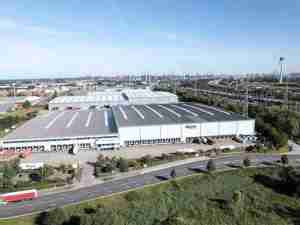Industry report urges immediate fixes to Illinois waterway infrastructure
posted by AJOT | Aug 18 2016 at 09:09 AM | Ports & Terminals
Soybean farmers benefit from improvements that ease delivery to foreign, domestic markets
BLOOMINGTON, ILL. - Improving the condition of the Illinois Waterway is "imperative," according to the recently issued "Final Report: An Economic Impact and Cluster Analysis of Illinois River Lock and Dam Facilities for Beneficial Users." The industry-supported report indicates the current fix-as-fail strategy has not eliminated the backlog of deferred maintenance nor addressed the need to expand the aging system's infrastructure to accommodate modern transportation requirements.
"This ground-breaking research helps quantify the critical importance of the Illinois River. Its natural and manmade systems of the Illinois River support our communities in many ways," says Paul Rasmussen, soybean farmer from Genoa, Ill., and Illinois Soybean Association (ISA) director. "The Illinois River passes through or touches 22 counties, and nearly two million jobs in the state are tied to the smooth operations of the river."
Rasmussen notes additional jobs and beneficial economics are tied to other navigable rivers the state relies upon, namely the Mississippi and Ohio rivers and Kaskaskia in southern Illinois.
The report finds ability to move goods through the Illinois Waterway on barge tows efficiently and reliably is significant to a wide variety of industries and users including agriculture, manufacturing and mining, along with movement to or from customers, supply chain business partners and workers. Even with the challenges it endures, the Illinois Waterway handled more than 24 million tons of cargo in 2014.
The waterway also has positive impacts on overall surface transportation infrastructure performance, says the report, reducing congestion and improving safety through freight handling on the waterway instead of on alternative surface roads and rail lines.
"According to a recent U.S. Department of Agriculture analysis, more than half of U.S. soybeans are destined for export markets. Around half of those soybean and soybean co-product exports are moved by barges on the inland waterways," says Rasmussen.
Specifically, the Illinois Waterway supports more than 1.7 million jobs and $102.5 billion in wages. Total employment in 2014 across the 22 counties that are adjacent to the waterway represents approximately 47 percent of all employment in the study area.
"Economic information gleaned from the study clearly shows the importance of our inland waterway transportation system to Illinois and surrounding states. This will prove invaluable as we advocate for future investments," says Tom Mueller of the Illinois Corn Marketing Board.
The report emphasizes that all Illinois residents will benefit from improvements to the waterway system as an essential means to move materials indispensable to modern life. Farmers and food processors benefit from the movement of grains, soybeans and fertilizers while construction companies use the system to move aggregates. Consumers and businesses alike benefit from the movement of petroleum fuels for transportation use and coal for electricity generation. Manufacturers and construction firms rely on movement of numerous types of materials, sand and gravel, iron and steel shipments, as well as chemicals and large machinery.
"Commercial navigation and our inland waterways are unsung assets of our transportation networks. This report identifies not only that they are a significant source of employment for Illinoisans across the state, with more than $102 billion in annual wages, but that with additional investment these benefits can grow," says Benjamin Brockschmidt, executive director, Infrastructure Council of the Illinois Chamber of Commerce.
The report was prepared by the Economic Development Research Group, Inc., in association with the Center for Transportation Research at the University of Tennessee and sponsored by the Illinois Chamber of Commerce Foundation, Illinois Soybean Association, Illinois Corn Marketing Board, Illinois Farm Bureau and the Chemical Industry Council of Illinois.









